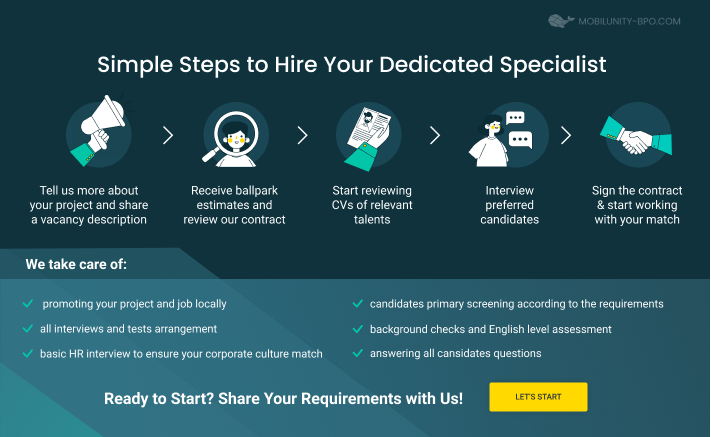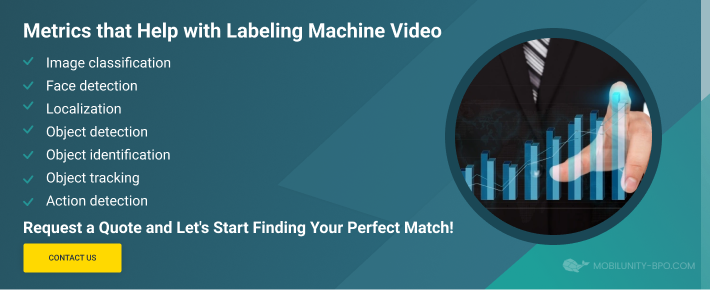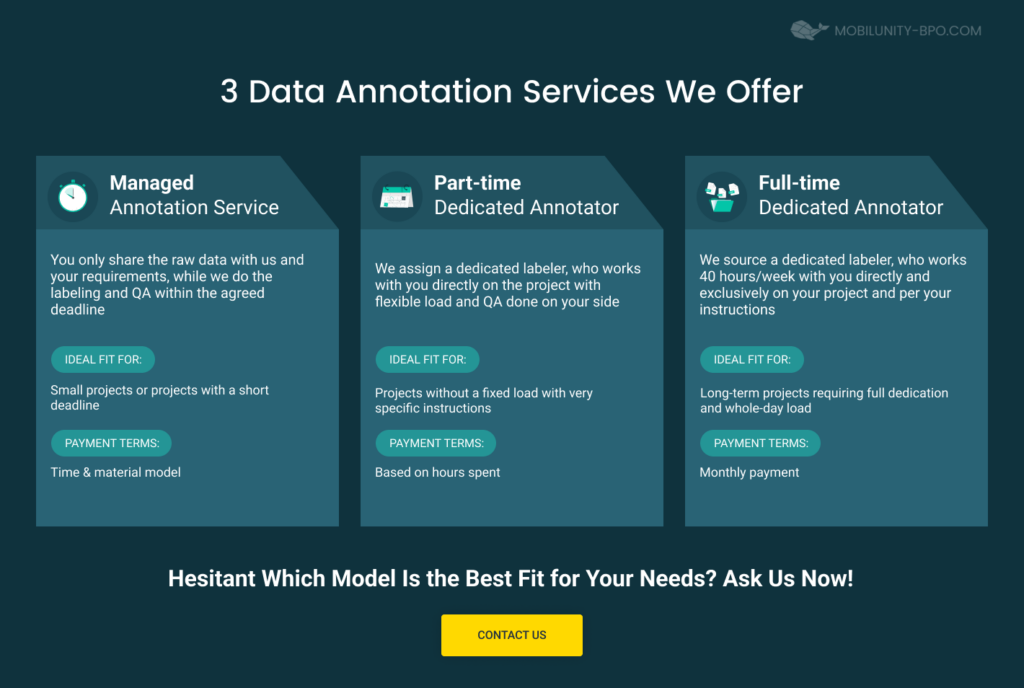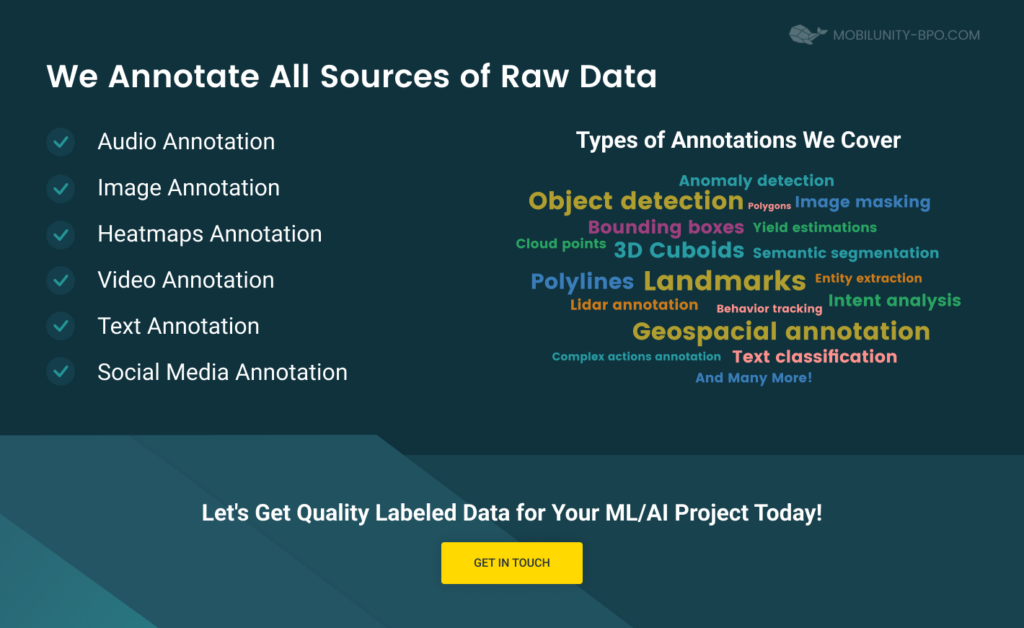Video Annotation in AI: Object, Face, and Action
Visual perception of the environment is a simple practice for the human eye. On the other hand, this is a significant challenge for computers. The video annotation aims to help machines recognize objects using so-called computer vision.
The data collected following the annotation process facilitates the training of artificial intelligence to perceive the world around it and its objects. As we’ll see later, computer vision already has numerous uses. In this article, we’ll tell you more about video annotation, how it works, and what challenges it still faces.
Understanding Video Annotation
Video annotation is the process of marking or tagging objects in a video. These labels, or the gathered data, will facilitate machine learning (ML) and deep learning (DL). As a result of this, pre-trained neural networks will be able to distinguish moving objects.
The purpose of video annotation, as previously stated, is to collect enough data for training neural networks. It is, on average, a significant amount of information. Then, computer vision tools that apply ML and DL models can successfully process visual data. After such training, computer vision software can detect faces, classify images, capture actions, and even label videos automatically.
The process of video annotation is way more complicated than image annotation. It’s because the video content analysis requires you to label moving items frame by frame. This procedure is usually time-consuming and requires careful data processing before introducing them into the neural network. That is why many companies outsource the task of labeling data for machine learning to specific service providers.

Industries That Require Video Labeling
Every year, AI video recognition becomes a vital assistant in multiple industries. We’ll go through each area of use for video content analysis software in further detail:
- Automobile industry. Here video annotation service is used to ensure the operation of autonomous vehicles. As a result, artificial intelligence detects such items on the road as other cars, road signs, street lights, pedestrians, and other objects self-driving autos may encounter.
- Gaming industry. This field makes extensive use of video face recognition. The facial expression data and human pose distinction are necessary to create game characters with realistic emotions and movements.
- Healthcare industry. Here video annotation software is needed to train artificial intelligence so that, in turn, it will be possible to monitor patients effectively, quickly establish accurate diagnoses, etc.
- Geospatial industry. Video object recognition helps to distinguish the geographical position and shape of entities. It helps with land use, agriculture, ecology, urban planning, mapping, transportation, and communications, among other things.
- Commercial industry. Face recognition video surveillance facilitates the understanding of customers’ interactions with goods. It helps to increase retail income significantly.
- Manufacturing industry. Here video labeling software aids with boosting the efficiency and quality of industrial robotic equipment.
- Security industry. In this area, video annotation helps to monitor behavioral patterns, recognize faces or license plates of cars to locate criminals or suspects.

Video Annotation in a Nutshell
When it comes to video labeling, annotators employ many tools, types, and methodologies. Modern footage has a frame rate of at least 24 frames per second, which is why tracking objects takes so long. As a result, video annotation, opposed to picture tagging, necessitates more advanced data labelization techniques.
There are two basic methods for annotating data in a video:
- Frame-by-frame annotation. In this case, the annotator splits the video into numerous separate images and labels each frame individually. Although this procedure is quite time-consuming, it allows for more precise labeling of all the necessary information in every frame. It is especially relevant for dynamic videos with fast-moving objects.
- Streaming video annotation. Following this method, the annotator uses specific video annotation software to accomplish live video annotation. This technique is becoming more widespread because of its decent data processing capacity. As more of these tools become available, the classification of footage is getting more precise. It also facilitates video annotation machine learning.
As we have already stated, video recognition AI is used in various fields to achieve specific goals. In particular, it allows us to identify faces, vehicles, and other objects, assess behavioral patterns, including those of concern, and track activity and movement.
To effectively train neural networks, you need to determine your task: will it be road lane detection to increase self-driving car performance or, for example, face recognition from video stream. Here are some of the most common metrics that may help with labeling machine video:
- Image classification. Here you may select the category to which your video belongs.
- Face detection. You can customize your video annotation app to identify faces. Thus, you will create a database that you can apply for many purposes, including detecting lawbreakers.
- Localization. This option helps customize the video object recognition software to recognize the target item in the footage.
- Object detection. Another feature that allows the software to discover and pinpoint an object.
- Object identification. Identification is more about the category of an object than its location. For example, you can configure video annotation software to recognize all cars in the footage.
- Object tracking. This setting allows you to track the trajectory of the object, its position in space, and changes in movement during the footage.
- Action detection. This feature enables any video action recognition within the frame.

In addition to all of this, it is critical to recognize what object marking options exist. The following are the primary types of techniques in video annotation deep learning:
- Bounding boxes. These are the most prevalent types of video labeling, and they can be two-dimensional and three-dimensional. Typically, these are rectangular frames that draw attention to specific objects in the video. The boxes must cleave the item precisely to allow artificial intelligence to identify it as readily as possible. 3D frames provide you with more possibilities, allowing you to define not just the object’s length and width but also its depth.
- Polygons. This video annotation method is helpful in situations when a regular rectangle is not enough to highlight a moving object accurately. Polygons allow you to label any item, regardless of its shape. This method requires experienced annotators for video annotation outsourcing in order to use lines to indicate each object’s edges.
- Semantic segmentation. Semantic video annotation means breaking down each video into individual components and classifying them. In terms of labeling, this procedure is one of the most comprehensive. For example, in a video depicting city traffic, you can single out the following segments: cars, pedestrians, road signs, lights, lanes, and even more.
- Keypoint or landmark annotation. Annotators use this technique to set down points along the object’s edges and then link them, providing a framework for the item. This method is most often used to highlight the tiniest details, including human facial expressions and postures. Neural networks can accomplish face recognition in video owing to keypoint annotation.
- Polyline annotation. It is a technique for identifying lanes and road markings. It is also a form of autonomous vehicle training data set. As a result, self-driving cars recognize the boundaries within which they may travel. It improves traffic safety as well.
You now have a better understanding of how the annotators mark items in the video. But how do you organize a data set in such a way that neural networks can distinguish the things you require? The steps are as follows:
- Identification of features. First, you have to determine what precisely you want the AI to learn. Then, you create an action scenario and define the object types you require.
- Collection of data. In essence, it’s a search for specific videos that fit within the previously defined category.
- Labeling of data. At this stage, you have to perform the annotation manually, using any of the methods indicated above that is convenient for you.
- Processing of data. You choose high-quality and understandable material for artificial intelligence to process.
- Integration of data into the neural network. It is the final stage, which will be an artificial intelligence learning process.
So, thanks to the use of various techniques and methods for video recognition deep learning, you can reach incredible heights, including even automatic large-scale video object recognition.

Unleashing the Benefits: Outsourcing Video Annotation Tasks
In the realm of artificial intelligence (AI) and computer vision, the accuracy and reliability of training data are paramount. Video annotation, a vital component of data annotation, plays a crucial role in enabling machine learning algorithms to understand and interpret visual information. As the demand for annotated video data increases, businesses are turning to outsourcing as a solution. In this article, we will explore the benefits of outsourcing video annotation tasks. From improved accuracy to access to specialized services, outsourcing video annotation can revolutionize machine learning and computer vision projects, driving enhanced AI capabilities.
- AI Video Annotation Service: Leveraging Expertise and Tools. Outsourcing video annotation tasks to specialized AI video annotation service providers allows organizations to leverage their expertise and advanced tools. These providers possess domain-specific knowledge and experience in accurately annotating videos for machine learning and computer vision applications. By partnering with them, businesses can benefit from their proficiency and access cutting-edge annotation tools to ensure precise and consistent annotations.
- Video Labeling for Machine Learning: Enhancing Training Data Quality. Video labeling is instrumental in improving the quality of training data for machine learning algorithms. Outsourcing video annotation services enables organizations to tap into the skills of experienced annotators who can accurately label objects, actions, and events in videos. This enhances the richness and diversity of the training dataset, enabling machine learning models to learn complex patterns and make more accurate predictions.
- Video Annotation Services for Computer Vision: Streamlining Project Workflows. Computer vision projects heavily rely on accurately annotated video data. Outsourcing video annotation services for computer vision projects can streamline workflows and ensure high-quality annotations. Service providers specialize in handling large volumes of video data, applying annotation techniques tailored to specific computer vision requirements. This streamlining of annotation workflows allows businesses to focus on the core aspects of their computer vision projects while ensuring the availability of accurately labeled data.
- Video Annotation for Machine Learning: Accelerating Model Training. Machine learning models trained on annotated video data can achieve advanced levels of understanding and recognition. Outsourcing video annotation for machine learning projects accelerates the model training process by providing a continuous supply of accurately labeled videos. With a steady stream of annotated video data, organizations can train models faster, iterate more efficiently, and achieve higher performance in their machine learning applications.
- Video Annotation Vendor: Accessing Specialized Services. Engaging a video annotation vendor brings the advantage of accessing specialized services tailored to the specific needs of machine learning and computer vision projects. These vendors employ skilled annotators who understand the nuances of video annotation, such as object tracking, activity recognition, and temporal relationships. Their expertise ensures the production of high-quality annotated videos that are essential for training robust and accurate AI models.
- Machine Learning Video Annotation: Enabling Advanced AI Capabilities. Outsourcing video annotation tasks directly contribute to enabling advanced AI capabilities. Accurate video annotations help machine learning models understand complex visual scenarios, detect objects, and comprehend actions and interactions. By leveraging the expertise of video annotation service providers, organizations can unlock the potential of AI, empowering their systems to make more informed and intelligent decisions.
- Computer Vision Video Annotation: Improving Accuracy and Precision. Computer vision systems heavily rely on accurately annotated videos to achieve precise object detection, tracking, and recognition. Outsourcing video annotation services for computer vision projects ensures meticulous labeling of objects, attributes, and spatial relationships within videos. This precision enhances the accuracy and robustness of computer vision algorithms, enabling applications such as autonomous vehicles, surveillance systems, and facial recognition technology to perform with greater efficiency.
- AI Video Annotation: Cost-Effective and Scalable Solution. Outsourcing video annotation tasks offers a cost-effective and scalable solution for organizations. By engaging AI video annotation services, businesses can avoid the costs and logistical challenges associated with building an in-house annotation team. Service providers operate on a flexible model, allowing organizations to scale annotation efforts up or down based on project requirements, ensuring cost optimization and resource efficiency.
Outsourcing video annotation tasks provides businesses with numerous benefits, including access to specialized expertise, improved training data quality, streamlined workflows, and accelerated model training. By partnering with video annotation vendors, organizations can enhance their machine learning and computer vision projects, enabling advanced AI capabilities and achieving more accurate and robust results.
Image annotation outsourcing offers businesses the advantage of accessing skilled annotators and specialized tools to ensure accurate and comprehensive annotations, enabling the development of robust computer vision models and applications. Embracing outsourcing as a strategic approach in video annotation empowers businesses to focus on their core competencies while ensuring access to high-quality annotated data essential for AI-driven success.
Main Approaches Applied to Solve Video Annotation Challenges
We have repeatedly mentioned that the main challenge in video annotation is the necessity to process a large amount of data. However, this isn’t the only issue that an annotator may confront. Here are some more challenges you could come across:
- Moving objects. Items in videos may move at a fast pace. It causes the image to become blurry or distorted. That is a problem for the annotator since capturing a moving object is exceptionally challenging. No wonder professionals tend to utilize a frame-by-frame method in such cases.
- The object’s unusual location. It might be challenging to tag an item on a video if it is hard to reach for particular reasons.
- Maintaining a high level of precision. For efficient AI training, it is essential that the marked objects are easy to recognize and their selection is as accurate as possible. As a result, annotators devote a significant effort to producing high-quality data.
- Picking the right vendor. Video annotation outsourcing is a popular way to organize business processes in a company. It’s critical to select a provider who can satisfy your needs and supply you with a team of knowledgeable specialists.
However, there are several approaches to fixing all of these issues that we’ll discuss today. Those are as follows:
- Tracking approach. It’s the use of tools that allow you to follow the object’s movement, thus facilitating the labeling process.
- Post-processing approach. It’s like a quality assurance applied to video annotation. After you’ve gathered and labeled the material, go for a round-check.
- Combination of various labeling techniques. Using multiple methods for video annotation can aid in solving problems with object detection.
- Recurrent neural network use. It aids in the modeling of the video’s temporal components.
- 3D convolutional neural networks use. Such neural networks help to process three-dimensional data models.

Why Hire Mobilunity-BPO as Your Reliable Vendor?
Mobilunity-BPO is a company that will undoubtedly assist you in overcoming one of the most challenging aspects of video annotation: locating a trustworthy service provider.

Since 2010, we’ve been an outsourcing firm dedicated to making our clients’ businesses thrive. It’s been over a decade! We’ve been gathering teams to meet our clients’ needs for this long time. More than 200 of our employees have worked tirelessly to execute over a thousand successful projects.
Here are some of the services that we provide:
- 2D bounding boxes annotation;
- 3D bounding boxes annotation;
- Polygons annotation;
- Polyline annotation;
- Landmark annotation;
- Face recognition video annotation;
- Labeling objects;
- Classifying data;
- And even more.

Our specialists have extensive experience and knowledge that allows them to annotate videos so that artificial intelligence can interpret them effortlessly. As you can see, Mobilunity experts are well-versed in many types of annotations and cutting-edge data processing techniques for machine learning.
However, we stand out not only in video annotation but also in a careful selection of staff. The process of hiring a team for your project has never been so easy. Just contact us and list your requirements, and we will do the rest for you.